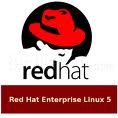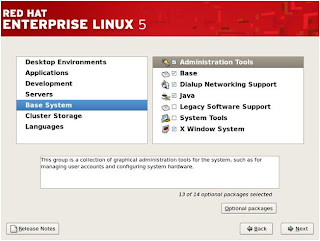. C6. Create default layout allows you to have some control concerning what data is removed (if any) from your system. Your options are as under and can also see in the figure:
6.1.1. Remove all partitions on selected drives and create default layout
6.1.2 Remove linux partitions on selected drives and create default layout
6.1.3. Use free space on selected drives and create default layout
6.1.4 Create Custom Layout
6.1.1 Remove all partitions on selected drives and create default layout
Select this option to remove all partitions on your hard drive(s) (this includes partitions created by other operating systems such as Windows VFAT or NTFS partitions).
6.1.2 Remove linux partitions on selected drives and create default layout
Select this option to remove only Linux partitions (partitions created from a previous Linux installation). This does not remove other partitions you may have on your hard drive(s) (such as VFAT or FAT32 partitions).
6.1.3. Use free space on selected drives and create default layout
Select this option to retain your current data and partitions, assuming you have enough free space available on your hard drive(s).
6.1.4 Create Custom Layout
Select this option to create your own desired partition. In this option you can delete existing partition which you want and can also create the new partition as you want and can also assign you desired file system.
Note
If you have more than one storage device installed in your system then choose the storage drive(s) on which you want Red Hat Enterprise Linux to be installed.
7. Disk Druid
The partitioning tool used by the installation program is Disk Druid. Disk Druid offers a graphical representation of your hard drive(s).
There are multiple buttons control Disk Druid's utility. They are used to change the attributes of a partition (for example the file system type and mount point) and also to create RAID devices. Buttons on this screen are also used to accept the changes you have made, or to exit Disk Druid. For further explanation, take a look at each button in order:
New: Used to request a new partition. When selected, a dialog box appears containing fields (such as the mount point and size fields) that must be filled in.
Edit: Used to modify attributes of the partition currently selected in the Partitions section. Selecting Edit opens a dialog box. Some or all of the fields can be edited, depending on whether the partition information has already been written to disk.
You can also edit free space as represented in the graphical display to create a new partition within that space. Either highlight the free space and then select the Edit button, or double-click on the free space to edit it.
To make a RAID device, you must first create (or reuse existing) software RAID partitions. Once you have created two or more software RAID partitions, select Make RAID to join the software RAID partitions into a RAID device.
Delete: Used to remove the partition currently highlighted in the Current Disk Partitions section. You will be asked to confirm the deletion of any partition.
Reset: Used to restore Disk Druid to its original state. All changes made will be lost if you Reset the partitions.
RAID: Used to provide redundancy to any or all disk partitions. It should only be used if you have experience using RAID. To read more about RAID, refer to the Red Hat Enterprise Linux Deployment Guide.
To make a RAID device, you must first create software RAID partitions. Once you have created two or more software RAID partitions, select RAID to join the software RAID partitions into a RAID device.
LVM: Allows you to create an LVM logical volume. The role of LVM (Logical Volume Manager) is to present a simple logical view of underlying physical storage space, such as a hard drive(s). LVM manages individual physical disks — or to be more precise, the individual partitions present on them. It should only be used if you have experience using LVM. To read more about LVM, refer to the Red Hat Enterprise Linux Deployment Guide. Note, LVM is only available in the graphical installation program.
To create an LVM logical volume, you must first create partitions of type physical volume (LVM). Once you have created one or more physical volume (LVM) partitions, select LVM to create an LVM logical volume.
8. Partition Fields
Above the partition hierarchy are labels which present information about the partitions you are creating. The labels are defined as follows:
Device: This field displays the partition's device name.
Mount Point/RAID/Volume: A mount point is the location within the directory hierarchy at which a volume exists; the volume is "mounted" at this location. This field indicates where the partition is mounted. If a partition exists, but is not set, then you need to define its mount point. Double-click on the partition or click the Edit button.
Type: This field shows the partition's file system type (for example, ext2, ext3, or vfat).
Format: This field shows if the partition being created will be formatted.
Size (MB): This field shows the partition's size (in MB).
Start: This field shows the cylinder on your hard drive where the partition begins.
End: This field shows the cylinder on your hard drive where the partition ends.
9. Recommended Partitioning Scheme
9.1 A /boot/ partition (100 MB) — the partition mounted on /boot/ contains the operating system kernel (which allows your system to boot Red Hat Enterprise Linux), along with files used during the bootstrap process. Due to limitations, creating a native ext3 partition to hold these files is required. For most users, a 100 MB boot partition is sufficient.
9.2 A root partition (3.0 GB - 5.0 GB) — this is where "/" (the root directory) is located. In this setup, all files (except those stored in /boot) are on the root partition. (3.0 GB partition allows you to install a minimal installation, while a 5.0 GB root partition lets you perform a full installation, choosing all package groups.)
9.3 A Swap Partition (double than physical RAM installed in your system). In this case, swap is also included in the / (root) partition.
10. File System Types
Red Hat Enterprise Linux allows you to create different partition types, based on the file system they will use. The following is a brief description of the different file systems available, and how they can be utilized.
ext2 — An ext2 file system supports standard Unix file types (regular files, directories, symbolic links, etc). It provides the ability to assign long file names, up to 255 characters.
ext3 — The ext3 file system is based on the ext2 file system and has one main advantage — journaling. Using a journaling file system reduces time spent recovering a file system after a crash as there is no need to fsck[2] the file system. The ext3 file system is selected by default and is highly recommended.
physical volume (LVM) — Creating one or more physical volume (LVM) partitions allows you to create an LVM logical volume. LVM can improve performance when using physical disks. For more information regarding LVM, refer to the Red Hat Enterprise Linux Deployment Guide.
software RAID — Creating two or more software RAID partitions allows you to create a RAID device. For more information regarding RAID, refer to the chapter RAID (Redundant Array of Independent Disks) in the Red Hat Enterprise Linux Deployment Guide.
swap — Swap partitions are used to support virtual memory. In other words, data is written to a swap partition when there is not enough RAM to store the data your system is processing. Refer to the Red Hat Enterprise Linux Deployment Guide for additional information.
vfat — The VFAT file system is a Linux file system that is compatible with Microsoft Windows long filenames on the FAT file system.
11. Configure your network setting. Let’s say you have a network settings like the one below
Host Name
ABC SERVER
IP Address
192.168.0.4
Subnet Mask
255.255.255.0
Gateway
192.168.0.1
Primary DNS
192.168.0.2
Secondary DNS
192.168.0.3
Host name and IP Addresses must be changed as per your configuration.
First, click the Edit button. In the Edit Interface eth0 window, uncheck the Use dynamic IP configuration (DHCP) and Enable IPv6 support. Next, fill up the IPv4 Address and Prefix (Netmask). Click OK when you’re done.
Using your mouse, click on the interactive map to select a specific city (represented by a yellow dot). A red X appears indicating your selection.
You can also scroll through the list at the bottom of the screen to select your time zone. Using your mouse, click on a location to highlight your selection.
To change your time zone configuration after you have completed the installation, use the Time and Date Properties Tool.
Type the system-config-date command in a shell prompt to launch the Time and Date Properties Tool. If you are not root, it prompts you for the root password to continue.
14. Specify a strong password at least six characters long and click Next when
Graphical Internet in Applications
Click Optional packages corresponding to Mail Servers in Servers and check postfix and squirrelmail.
Click Optional packages corresponding to Server Configuration Tools in Servers and check system-switch-mail-gnome.
Click Next when you’re done.
































